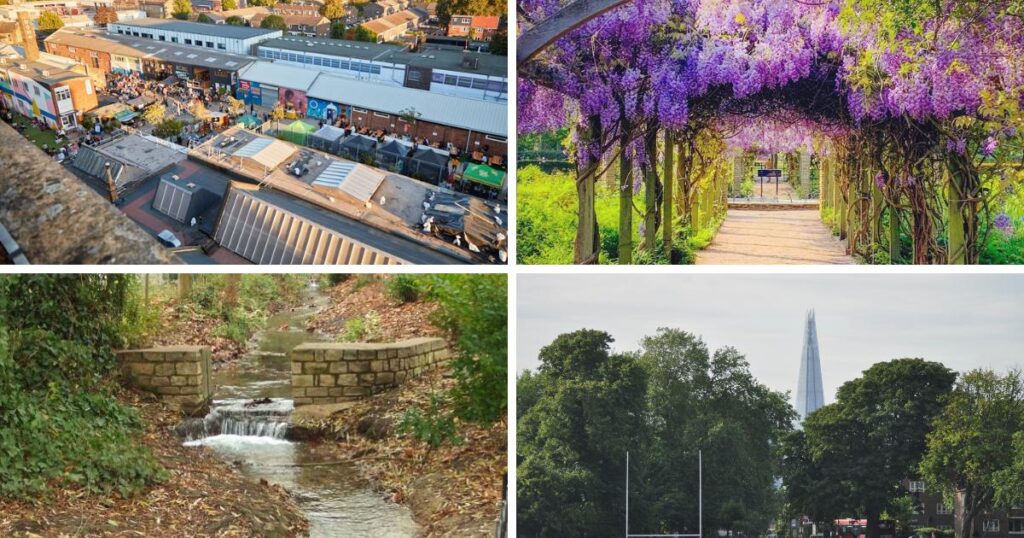Located between Dulwich and Camberwell, Peckham Rye is a bustling busy south east London community known for its vibrant foodie scene and quick links to the city by train.
But centuries ago, the Peckham Rye landscape would have looked very different, with a name reflecting its pastoral routes and nearby river.

According to records, the name Peckham first appeared in the Domesday Book of 1087 as “Pecheha,” an Anglo-Saxon term meaning “village among the hills”.
The Old English words pēac (hill) and hām (village) would have referred to the nearby heights of Honor Oak, Forest Hill and Telegraph Hill which neighbour the area.
However, the term Rye drives from the Old English rīth, meaning “stream” or “brook,” referring to the River Peck that once ran freely through the meadows.
Whilst most of this stream is today gone after it was enclosed in the early 19th century, a small part of the stream can still be found today in Peckham Rye Park towards its west side.

Centuries ago the area of Peckham had strong agricultural roots as a farming village, with maps from the 1740s depicting the area being a network of fields and smallholdings, with herds able to graze on the common before commencing into the city.
The boundaries of the Common spanning 64 acres have remained mostly unchanged to this day.
Famously in Peckham, poet and artist William Blake claimed in 1767 to see a tree full of angels in the common, which deeply inspired his work.

But over the centuries, Peckham as a pastoral and rural landscape began to change into an industrial space, with the introduction of the railway by 1865, along with bus routes to the city, which transformed the landscape from a greenspace into a popular Victorian suburb.
In 1868, the Camberwell Vestry and the London County Council purchased 49 acres surrounding Homestall Farm for £51,000 a sum, that would be worth over £7 million today, to preserve the land for public use.
The park was later opened in 1894, drawing in people in their thousands, who were said to have marched to Vestry Hall in Camberwell to celebrate its creation.

Over the decades Peckham Rye Park evolved and expanded, from the creation of its ornamental lake and rock gardens to the famed Sexby Garden, named after Lt-Col JJ Sexby, the London County Council’s first Chief Officer of Parks.
The park weathered world wars, the closure of its lido in the 1980s, and periods of neglect, before a community-led restoration in 2005 returned it to its former Victorian glory.
Whist much of the greenery that would have dominated Peckham has given way to urban life, Peckham Rye Park stands as a tribute to the village among the hills that Peckham was famously named after.




